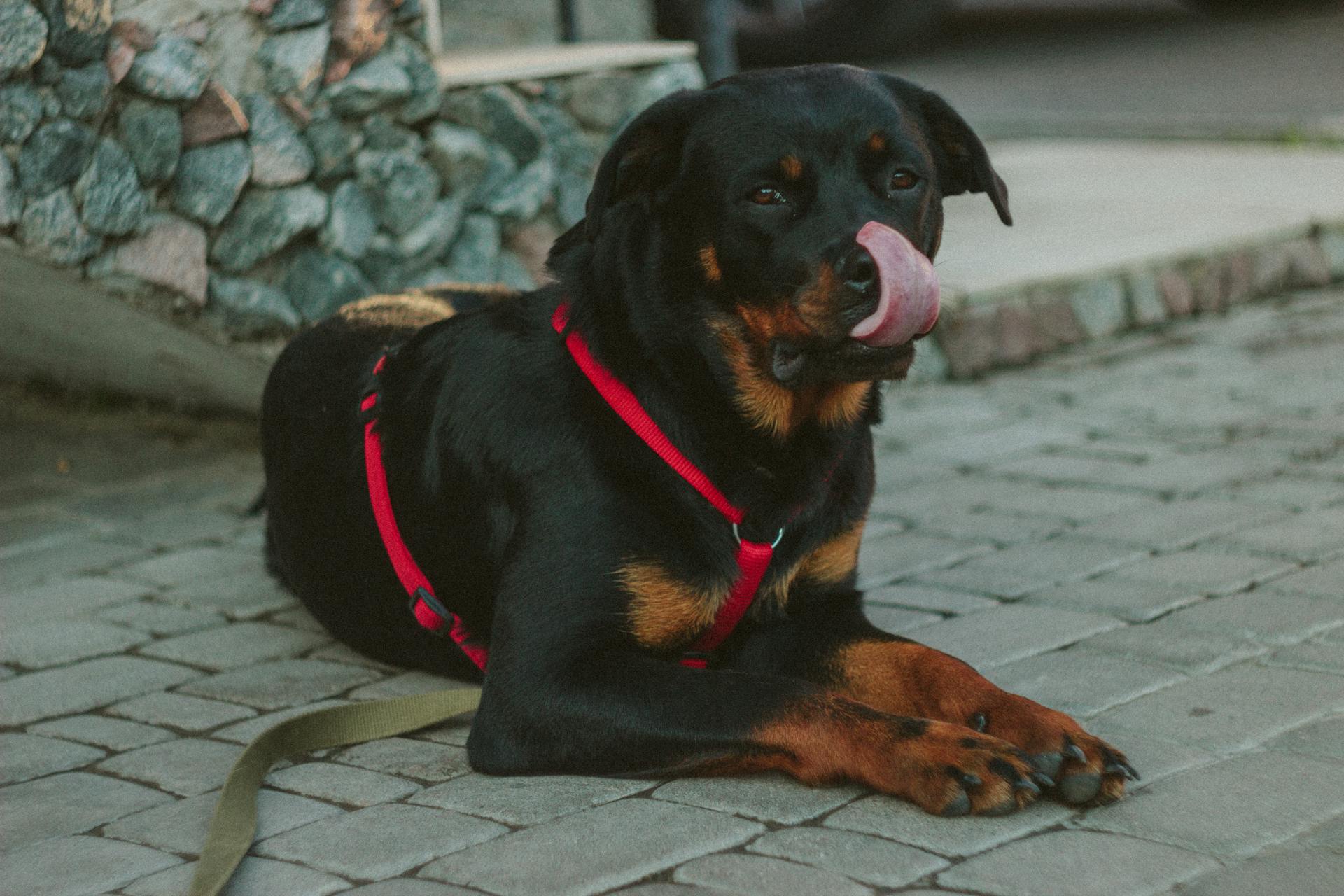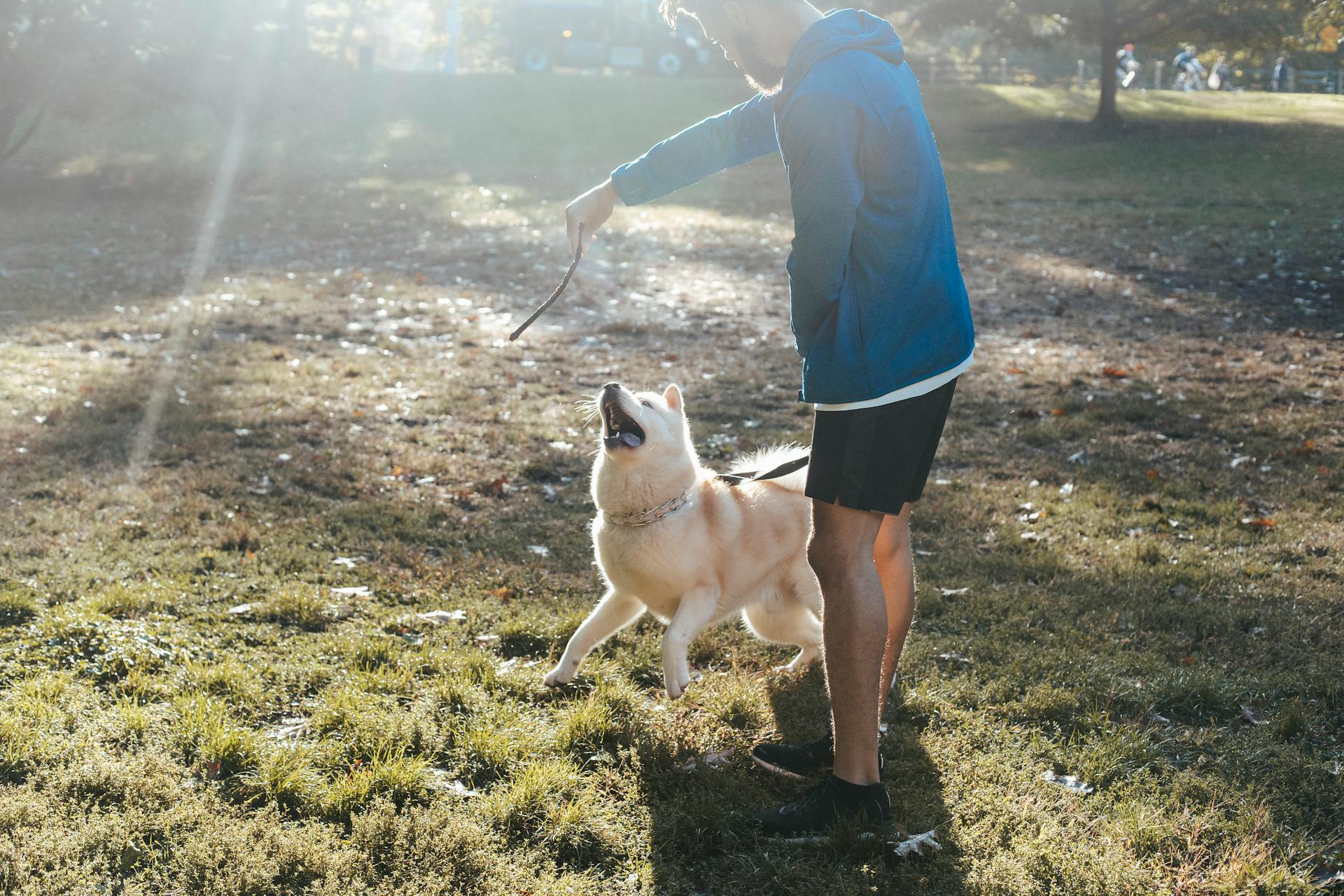
Rottweilers are often misunderstood as being difficult to train, but the truth is they are highly intelligent and eager to please. This breed thrives on structure and clear communication, making them a great fit for first-time dog owners.
Their short, dense coats require minimal grooming, but their powerful builds demand regular exercise to keep them happy and healthy. Rottweilers need at least 30 minutes of physical activity per day to prevent boredom and destructive behavior.
Their strong work ethic and loyalty make them a popular choice for search and rescue, police, and therapy work. With the right training and socialization, Rottweilers can become loving and loyal companions for families and individuals alike.
Their high trainability is due in part to their strong prey drive and instinct to follow a leader, making them highly responsive to positive reinforcement training methods.
Understanding Rottweilers
Rottweilers are highly intelligent and confident dogs, which can sometimes express itself as independence if they're not provided guidance and training. They thrive on stimulation and exercise, and grasp new commands quickly, making them excellent service and police dogs.
Rottweilers are naturally protective of their pack, but with proper socialization, they can easily get along with people and other dogs. They're loyal to their family and make great companions.
One key aspect to consider when training a Rottweiler is their strong instinct to guard and protect. This can be a challenge if they're not properly trained and socialized. However, with experience and knowledge, owners can help their Rottweilers become well-rounded pets.
Here are some common traits of Rottweilers:
- They can make playful and gentle family pets.
- They're loyal to their family and pack.
- They thrive on stimulation and exercise.
- They grasp new commands quickly.
As experienced owners will tell you, Rottweilers require proper introductions and socialization to behave well in public. They can be sensitive to unusual sounds and people on their home territory, but with training and patience, they can become confident and calm in new situations.
Training Basics
To train your Rottweiler, you'll need to start with basic obedience. This means teaching your dog the commands for "sit", "stay", "no", and "speak". Treats or a clicker can be helpful tools for this process.
Teaching impulse control is the next step, which involves using these commands when other people are in your house. This helps your dog understand that not everyone is a potential threat. You can begin differentiating between friendly and potentially dangerous individuals.
Socialization skills are also crucial, and your pup should be socialized from a young age with people who aren't part of your immediate family. This helps them realize that not all strangers are threats. If you're struggling with basic commands or socialization, consider taking your pet to a trainer or obedience class.
You'll need plenty of treats, a good leash, and a friend your dog isn't familiar with to get started with training. A clicker can be helpful, but it's optional.
For your interest: Why Do Rottweilers Tails Get Cut
Before You Begin
Before you start training your dog, you'll need plenty of treats to serve as incentives and rewards. Choose your dog's favorite treats to make training more enjoyable.
A good leash is also essential for training, as it will help you maintain control and keep your dog safe. Consider investing in a comfortable and durable leash.
You may also want to use a clicker as you train, but it's not strictly necessary. If you do decide to use a clicker, it can be a helpful tool in marking good behavior.
Having a friend who your dog isn't familiar with can be helpful later on in training, as it will provide an opportunity for socialization and training in new environments.
You might like: Are Rottweilers Good for First Time Owners
Basic Commands
Training your Rottweiler requires starting with basic obedience. Basic obedience training involves teaching your dog the commands for "sit", "stay", "no", and "speak". This is where treats or a clicker come in handy.
You'll need to teach your dog impulse control, which means using these commands when other people are in your house. This helps your dog understand that not everyone is a threat. For example, if your dog jumps up on you and you say "off", immediately offer a treat when they have four feet on the floor.
You might like: When Do Rottweilers Calm down
To teach socialization skills, your pup must be socialized from a young age with people who aren't part of your immediate family. This helps them realize that not all strangers will be threats. You can start by introducing your dog to new people, starting with a friend who your dog isn't familiar with.
Here are the basic commands you'll need to teach your Rottweiler:
- Sit
- Down
- Stand
- Off
- Roll over
- Speak
- Shake a paw
Remember to keep your teaching sessions short, around five minutes, and use plenty of treats and praise to encourage good behavior.
Training a Rottweiler
Training a Rottweiler requires early and consistent training, as they are intelligent and athletic dogs that can learn quickly, but also need mental stimulation to prevent boredom and destructive behavior.
Rottweilers are "sponges" at this age and can learn many things, so start with basic commands like "sit", "down", "stand", "off", "roll over", "speak", and "shake a paw." Keep teaching sessions short, around five minutes, as they have a short attention span.
You should teach your Rottweiler to "speak" during basic obedience training, but now it's time to teach them to bark on command or at potential danger. Watch your pup to see what everyday things they tend to bark at, such as squirrels or the mailman, and reward them for good behavior.
Here are the basic obedience commands to start with:
- Sit
- Down
- Stand
- Off
- Roll over
- Speak
- Shake a paw
Consistent training and setting boundaries early on will strengthen the bond between you and your Rottweiler, and help them learn to assess situations and behave accordingly.
Set Your Expectations
Setting clear expectations is crucial when training a Rottweiler. You want to think about what you want your dog to be able to do by age one and lay the foundation for training right from the start.
Typical goals for the average owner may include learning basic manners, such as lying down and not begging during dinner, being able to heel when visitors come over, and coming when called—without getting distracted.
See what others are reading: What Age Do Rottweilers Stop Growing
Early and consistent training is a must for Rottweilers, owners emphasize. They are intelligent and athletic, but also strong-willed and independent.
To get started, decide on the boundaries you want to set with your Rottweiler. If you let them on the couch once, you'll always have a dog that goes on the couch. Teach your dog where to lounge instead, and make their area a fun, inviting place where they like to spend time.
Here are some key training goals to consider:
- Basic manners, such as lying down and not begging during dinner
- Being able to heel when visitors come over
- Coming when called—without getting distracted
By setting clear expectations and training your Rottweiler consistently, you'll establish direct and intuitive communication skills and strengthen the bond between you and your dog.
Barking on Command
Teaching your Rottweiler to bark on command can be a bit tricky, but with consistency and positive reinforcement, they'll learn in no time. The key is to identify what triggers their barking, whether it's squirrels, the mailman, or something else entirely.
To start, watch your pup to see what everyday things they tend to bark at. This will give you an idea of what to focus on when teaching them to bark on command. For example, if they bark at strangers approaching the house, give them the instruction to "bark" as soon as you hear them begin barking. Reward your dog afterward for good behavior.
You can also try giving your pup the "bark" command and rewarding them if they start to bark at the danger. This will help them associate the command with the action. Keep practicing this exercise until your dog is barking on their own at strangers and other potential dangers.
Here's a step-by-step guide to help you teach your Rottweiler to bark on command:
- Watch your pup to see what everyday things they tend to bark at.
- Give your pup the instruction to "bark" as soon as you hear them begin barking at a potential danger.
- Reward your dog afterward for good behavior.
- Practice giving your pup the "bark" command and rewarding them if they start to bark at the danger.
- Keep practicing until your dog is barking on their own at strangers and other potential dangers.
Remember to be patient and consistent when teaching your Rottweiler to bark on command. With time and practice, they'll learn to respond to the command and alert you to potential dangers.
Frequently Asked Questions
Are Rottweilers good for beginners?
Rottweilers can be challenging for first-time owners to train. Proper training is essential for a calm and sociable companion.
Are Rottweilers hard to house train?
House training a Rottweiler requires patience, consistency, and positive reinforcement, as they can take time to learn. With proper training and discipline, Rottweilers can become well-trained and happy to go potty outside.
What is the first thing to teach a Rottweiler?
The first command to teach a Rottweiler is "sit", which makes everyday tasks like feeding and grooming much easier. Start by getting their attention to begin the training process.
Sources
- https://www.greencrossvets.com.au/pet-library/dogs/breed-guides/rottweiler-owners-guide/
- https://www.petplan.co.uk/pet-information/dog/breed/rottweiler/
- https://www.thefarmersdog.com/digest/the-rottweiler-breed-guide-personality-history-training-food-and-more/
- https://www.dogster.com/dog-training/how-to-train-rottweilers-to-be-guard-dogs
- https://www.akc.org/expert-advice/dog-breeds/how-to-train-a-rottweiler-training-your-rottie-puppy/
Featured Images: pexels.com


